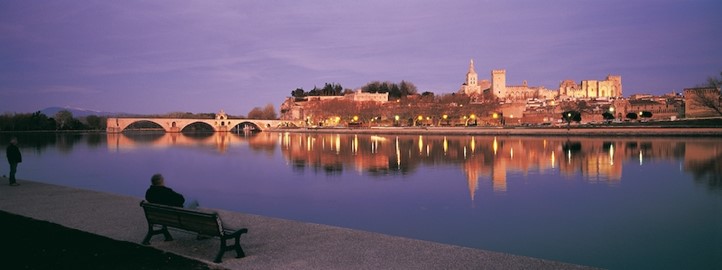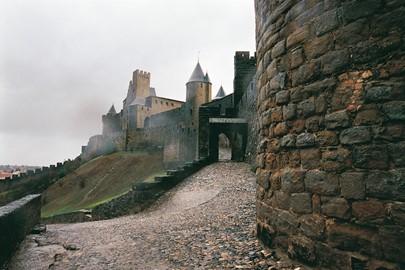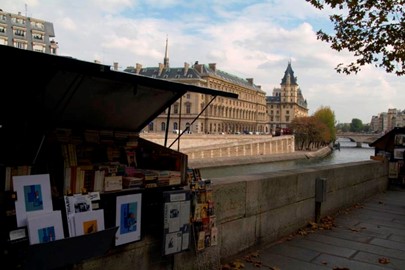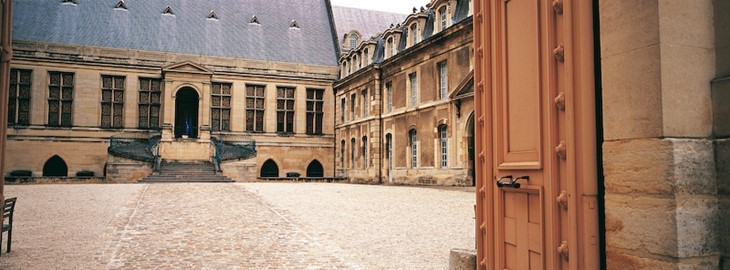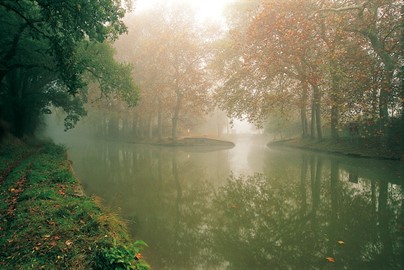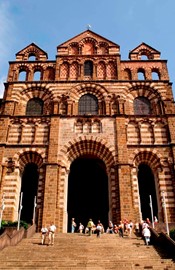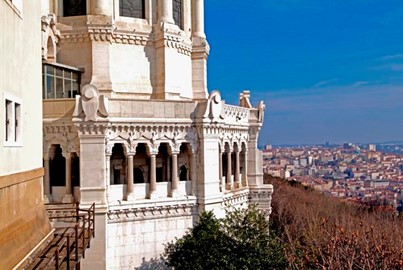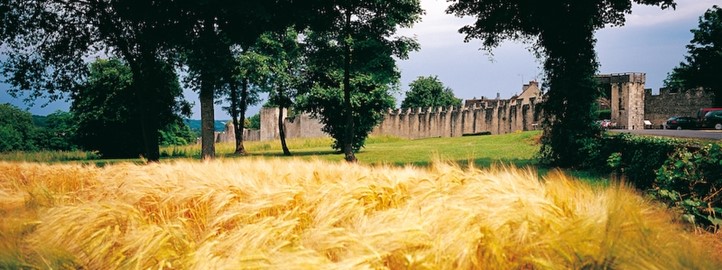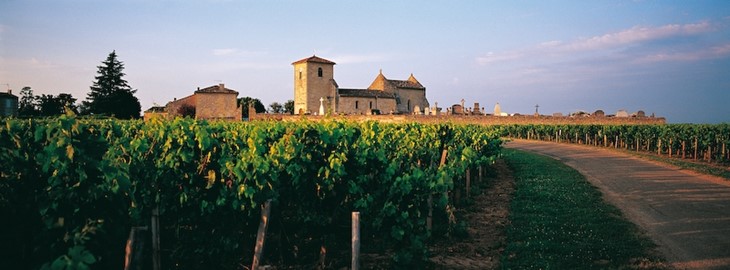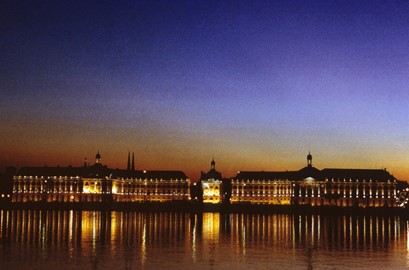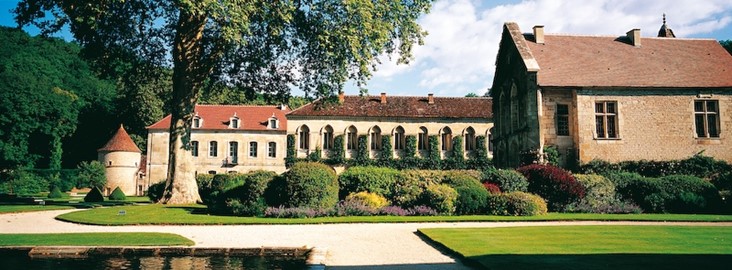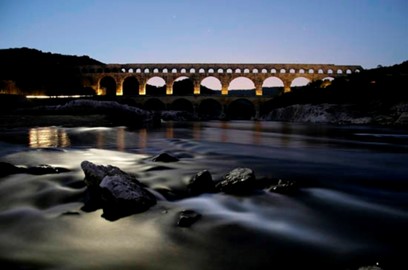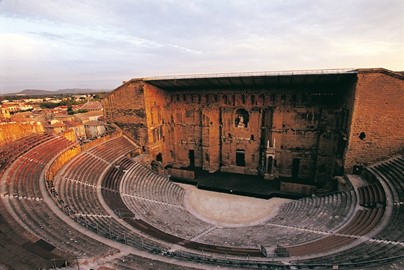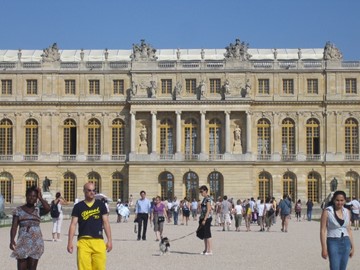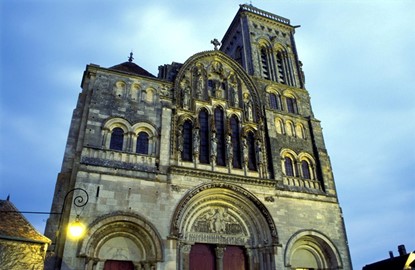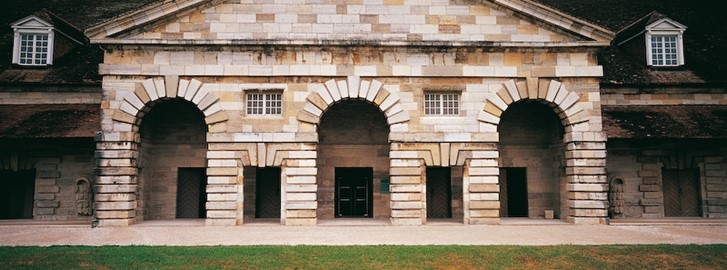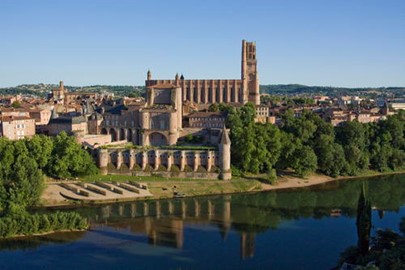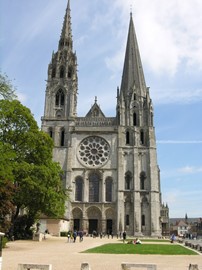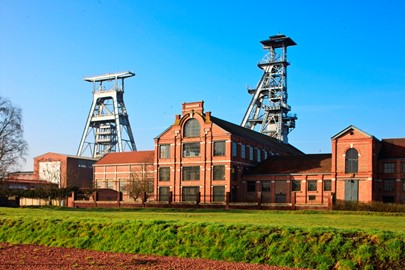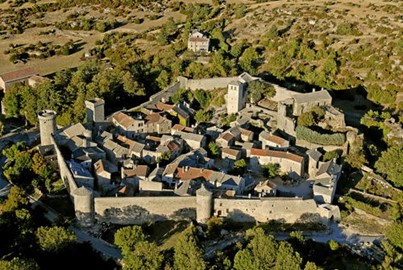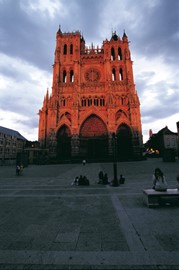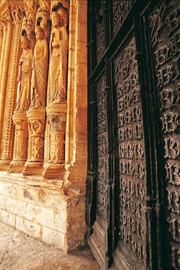category :: cultural
Arles
Arles, a UNESCO World Heritage site in France, is a historic city renowned for its well-preserved Roman monuments, including the ancient amphitheater and the Constantine Baths. The city also boasts a rich medieval heritage, with landmarks like the Saint-Trophime Church showcasing stunning Romanesque architecture. Arles inspired numerous works by Vincent van Gogh, who captured its vibrant landscapes and culture during his time there in the late 19th century. Today, it stands as a testament to its layered his... Read More
Avignon
Avignon, a UNESCO World Heritage site in France, is renowned for its well-preserved medieval architecture and rich historical significance. The city’s standout feature is the Palais des Papes, a grand 14th-century Gothic palace that served as the papal residence during the Avignon Papacy. Its historic center, encircled by intact ramparts, also includes the famous Pont d’Avignon, a partially surviving medieval bridge immortalized in song. Avignon’s cultural legacy and architectural treasures make it a captiv... Read More
Fortified City of Carcassonne
The Fortified City of Carcassonne, a UNESCO World Heritage site in France, is a remarkably preserved medieval fortress dating back to the 13th century. Its imposing stone walls, towers, and drawbridges showcase a blend of Roman and Gothic architecture, offering a glimpse into Europe’s feudal past. The site includes the Château Comtal, a castle within the city, and the Basilica of Saint-Nazaire, known for its stunning stained-glass windows. Today, it stands as a testament to historical engineering and attrac... Read More
Paris, Banks of the Seine
Paris, Banks of the Seine, a UNESCO World Heritage site in France, is renowned for its historic and cultural significance. This iconic stretch along the Seine River showcases a remarkable ensemble of architectural masterpieces, including Notre-Dame Cathedral, the Louvre Museum, and the Eiffel Tower, reflecting centuries of artistic and urban development. Its designation highlights its outstanding universal value, preserving a unique blend of history, aesthetics, and human ingenuity for future generations.
Reims
The Cathedral of Notre-Dame, Former Abbey of Saint-Rémi, and Palace of Tau in Reims, France, form a UNESCO World Heritage site renowned for their historical and architectural significance. The Gothic-style cathedral, a masterpiece of 13th-century design, served as the coronation site for French kings. The nearby Abbey of Saint-Rémi, with its Romanesque and Gothic elements, preserves centuries of religious heritage, while the Palace of Tau, once an archbishop’s residence, showcases opulent interiors tied to ... Read More
Canal du Midi
The Canal du Midi, a UNESCO World Heritage site in France, is a remarkable 17th-century engineering feat stretching 240 kilometers, connecting the Atlantic Ocean to the Mediterranean Sea. Constructed between 1666 and 1681 under Pierre-Paul Riquet’s direction, it features 91 locks, numerous bridges, and aqueducts, showcasing innovative hydraulic design. Originally built for trade and transport, it now serves as a popular route for boating and tourism, celebrated for its historical significance and picturesqu... Read More
Routes of Santiago de Compostela in France
The Routes of Santiago de Compostela in France, a UNESCO World Heritage site, encompass a network of pilgrimage paths leading to the shrine of St. James in Spain. These historic routes, used since the Middle Ages, are dotted with significant churches, monasteries, and hospices that supported pilgrims on their spiritual journey. Recognized for their cultural and historical importance, they reflect centuries of religious devotion and architectural heritage. Today, they remain a testament to the enduring tradi... Read More
Lyon
Lyon, a UNESCO World Heritage site in France, is renowned for its rich history and cultural significance. The city boasts a well-preserved Renaissance old town, Vieux Lyon, with narrow cobblestone streets and charming traboules (hidden passageways). Its Roman heritage is evident in the ancient Théâtre Gallo-Romain, while the Basilica of Notre-Dame de Fourvière stands as a striking symbol of its architectural splendor. Lyon’s designation reflects its role as a historical crossroads, blending Gallo-Roman, med... Read More
Provins
Provins, a UNESCO World Heritage site in France, is a well-preserved medieval town renowned for its historical significance and annual medieval fairs. Once a thriving commercial hub in the 11th and 12th centuries, it features impressive fortifications, including ramparts and towers, alongside charming cobblestone streets and half-timbered houses. The town’s rich past comes alive through landmarks like the Tithe Barn and the underground galleries, offering a glimpse into its medieval legacy. Today, Provins a... Read More
Saint Emilion
The Jurisdiction of Saint-Émilion, a UNESCO World Heritage site in France, is a historic village renowned for its medieval architecture and exceptional viticultural landscape. Its well-preserved monolithic church, carved from a single limestone rock, and ancient underground catacombs highlight its rich history dating back to Roman times. The site’s unique blend of cultural heritage and centuries-old winemaking tradition, producing some of the world’s finest red wines, earned it global recognition. Visitors ... Read More
Le Havre
Le Havre, a UNESCO World Heritage site in France, is a remarkable example of post-World War II urban planning and architecture. Designed by Auguste Perret, the city showcases a modernist reconstruction with innovative use of reinforced concrete, blending functionality with aesthetic harmony. Its unique layout, featuring wide boulevards and a grid pattern, reflects a vision of renewal after wartime destruction. Key landmarks, like the St. Joseph’s Church with its striking tower, highlight Le Havre’s cultural... Read More
Bordeaux
Bordeaux, Port of the Moon, is a UNESCO World Heritage site in France, renowned for its exceptional urban ensemble reflecting over 2,000 years of history. Named for its crescent-shaped riverfront along the Garonne, it features elegant 18th-century architecture, grand boulevards, and iconic landmarks like the Place de la Bourse and its reflecting pool. The site’s historical significance as a thriving trade port and its well-preserved neoclassical design highlight its cultural and architectural value, earning... Read More
Fortifications of Vauban
The Fortifications of Vauban, a UNESCO World Heritage site in France, consist of a series of military structures designed by the renowned 17th-century engineer Sébastien Le Prestre de Vauban. These fortifications, built during the reign of Louis XIV, showcase innovative defensive architecture, including star-shaped bastions and strategic layouts adapted to the landscape. Recognized for their historical and architectural significance, they represent a pinnacle of military engineering from the era and continu... Read More
Cistercian Abbey of Fontenay
The Cistercian Abbey of Fontenay, a UNESCO World Heritage site in France, is a remarkably preserved 12th-century monastery exemplifying Cistercian simplicity and functionality. Founded in 1118, its austere stone architecture includes a church, cloister, and dormitories, reflecting the order’s monastic ideals. Nestled in a tranquil valley, it remains one of the oldest surviving Cistercian complexes. The abbey’s forge and gardens highlight its self-sufficient past. This site offers a serene glimpse into medie... Read More
Pont du Gard
Pont du Gard, a UNESCO World Heritage site in France, is an ancient Roman aqueduct bridge built in the 1st century AD to carry water across a river valley. Standing three tiers high, its massive stone arches showcase remarkable engineering and durability. Constructed without mortar, it remains one of the best-preserved structures of its kind. The bridge once supplied a thriving Roman colony with fresh water, highlighting advanced infrastructure. Its elegant design blends seamlessly with the natural landscap... Read More
Orange
The Roman Theatre of Orange, a UNESCO World Heritage site in France, is one of the best-preserved ancient theaters from the 1st century CE. Built into a hillside, its grand stage wall and tiered seating once hosted performances for thousands. The structure showcases Roman engineering and acoustic design at its finest. Its intricate carvings and robust stonework reflect the empire’s cultural influence. Today, it stands as a testament to antiquity’s architectural legacy. This site offers a striking glimpse in... Read More
Versailles
The Palace of Versailles, a UNESCO World Heritage site in France, is a grand palace and gardens epitomizing 17th-century royal extravagance. Built under Louis XIV, its opulent halls, like the Hall of Mirrors, showcase Baroque architecture and lavish decor. The sprawling gardens feature fountains, sculptures, and manicured lawns, reflecting meticulous design. Once a political hub, it symbolizes absolute monarchy’s power and prestige. This iconic site blends history, art, and nature in stunning harmony.
Vézelay
Vézelay, a UNESCO World Heritage site in France, is a medieval hilltop village centered around the Basilica of Saint Mary Magdalene. This Romanesque masterpiece, built in the 12th century, features intricate carvings and a soaring nave, drawing pilgrims for centuries. The site served as a key starting point for Crusades and Santiago de Compostela pilgrimages. Its well-preserved streets and panoramic views enhance its historic charm. Vézelay reflects a rich blend of spiritual significance and architectural b... Read More
Royal Saltworks of Arc et Senans
The Royal Saltworks of Arc-et-Senans, a UNESCO World Heritage site in France, is an 18th-century industrial complex designed for salt production. Built in a visionary semicircular layout, it reflects Enlightenment-era ideals of order and innovation. The site includes grand buildings like the Director’s House and workers’ quarters, showcasing architectural ambition. Once a vital economic hub, it used nearby brine springs to create salt. Today, it stands as a testament to France’s industrial heritage and utop... Read More
Albi
The Episcopal City of Albi, a UNESCO World Heritage site in France, is a medieval ensemble dominated by the red-brick Sainte-Cécile Cathedral, a Gothic masterpiece. Built from the 13th century, its fortress-like design reflects the Church’s power after the Cathar heresy. The adjacent Berbie Palace, now a museum, houses an extensive Toulouse-Lautrec collection. Narrow streets and historic homes add to its charm. This site blends architecture, history, and art seamlessly. It offers a striking glimpse into Fra... Read More
Chartres Cathedral
Chartres Cathedral, a UNESCO World Heritage site in France, is a masterpiece of Gothic architecture from the 12th and 13th centuries. Renowned for its soaring towers and intricate stone carvings, it stands as a testament to medieval craftsmanship. The cathedral’s vibrant stained-glass windows, depicting biblical scenes, are among the world’s finest. Its well-preserved structure reflects the era’s religious devotion and artistic innovation. This iconic site draws visitors to explore its historical and spirit... Read More
Nord Pas de Calais Mining Basin
The Nord-Pas de Calais Mining Basin, a UNESCO World Heritage site in France, is a historic industrial landscape shaped by over three centuries of coal mining. It features pitheads, slag heaps, and workers’ villages, reflecting the region’s economic and social history. The site preserves the legacy of the Industrial Revolution and its impact on communities. Its distinctive terrain blends human ingenuity with stark natural forms. This area offers a poignant look at France’s industrial past and its evolution.
Causses and the Cévennes
The Causses and the Cévennes, a UNESCO World Heritage site in France, is a vast pastoral landscape of limestone plateaus and rugged mountains. Shaped by centuries of agro-pastoral traditions, it features ancient stone villages, terraces, and grazing lands. This region reflects a harmonious balance between humans and nature, rooted in medieval practices. Its dramatic scenery includes deep gorges and rolling hills, rich with biodiversity. The site preserves a unique cultural heritage tied to sustainable land ... Read More
Amiens Cathedral
Amiens Cathedral, a UNESCO World Heritage site in France, is a towering Gothic masterpiece built in the 13th century. Known for its soaring nave and intricate facade adorned with countless statues, it exemplifies medieval craftsmanship. The cathedral’s vast interior houses stunning stained glass and detailed reliefs. Its harmonious proportions and grandeur make it a pinnacle of Gothic architecture. This historic site reflects France’s religious and artistic legacy.
Bourges Cathedral
Bourges Cathedral, a UNESCO World Heritage site in France, is a magnificent Gothic masterpiece begun in the 12th century. Renowned for its soaring arches and intricate stained glass, it exemplifies medieval architectural brilliance. The cathedral’s harmonious design lacks a transept, creating a unified interior space. Its detailed sculptures and vibrant windows depict biblical scenes with stunning clarity. This historic site stands as a testament to France’s religious and artistic heritage.

